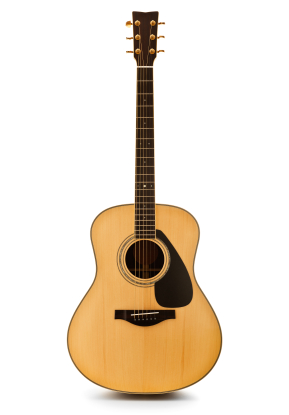 Stringed instruments have existed since ancient times and are used in almost every culture. Some important forerunners of the guitar are the Lute and the Oud, both of which originated in the middle east. These instruments have four or five courses of two strings side by side – similar to a mandolin or a twelve string guitar.
Stringed instruments have existed since ancient times and are used in almost every culture. Some important forerunners of the guitar are the Lute and the Oud, both of which originated in the middle east. These instruments have four or five courses of two strings side by side – similar to a mandolin or a twelve string guitar.
First Appearance
The guitar itself first appeared in Spain in about the 15th century. The first guitars were varitions on the lute, which was one of the most popular Renaissance instruments. These guitars had four or five courses of strings. In the 16th century, the first published music for the guitar was written by Alonso Mudarra. His pieces are still played by guitarists today. Towards the end of the 18th century, the first six string guitar appeared. This was a much more versatile instrument than the earlier versions and its popularity quickly spread throughout Europe and eventually to all parts of the world.
Evolution of the Modern Guitar
#1 The Classical Guitar
The first half of the 19th century is the period of greatest development of Classical guitar music. There were several guitar virtuosos at this time who wrote prolifically for the instrument. The most famous of these were Fernando Sor, Dionisio Aguado, Matteo Carcassi and Mauro Guiliani. On hearing Giuliani perform, Beethoven is reputed to have said “the guitar is a miniature orchestra in itself”.
The Classical guitar and it’s repertoire have continued to develop up to the present day. The modern Classical guitar is larger than earlier versions and gut strings have been replaced by nylon, but the sound and techniques are basically the same.
#2 The Steel String Acoustic Guitar
The steel string Acoustic guitar developed in America. German born luthier (guitar maker) C.F Martin developed an X brace under the soundboard to strengthen the guitar and when steel strings first appeared around 1900, this design was perfectly suited to the extra tension the steel strings put on the guitar.
The Martin company is still probably the most famous of all acoustic guitar makers but today there are many variations on the basic design of the steel string guitar. Some of these include the Resonator guitar which contains a metal resonator cone and is frequently used for slide guitar, the Lap steel guitar and the 12 string guitar.
#3 The Electric Guitar
The Electric guitar was invented in the 1930’s by Adolph Rickenbacker and George Beauchamp. The first electric guitars were basically amplified acoustic guitars which were mainly used by Jazz guitarists, but through the following decades, the designs began to change. in the 1950’s, solid body electric guitars began to appear. The most famous of these were the Fender Stratocaster and the Gibson Les Paul.
These guitars rely totally on the pickups and amplifier to produce the sound of the guitar, whereas hollow body electric guitars such as the Gibson 125 or 175 use a combination of acoustic and electric sounds. Another important part of modern electric guitars is the tremolo arm or ‘whammy bar’ which is used to produce a variety of sounds, from subtle vibrato to dramatic space age sounds. Today’s electric guitars come in a vast array of shapes, sizes, colours and pickup configurations.
– Continue learning with us at LearnToPlayMusic.com.






























Leave A Comment
You must be logged in to post a comment.